We use cookies to provide you with the best possible service and a user-friendly website.
Please find our Privacy Policy on data protection and data management here
Please find more information on the cookies here
A Renaissance guide to relationships
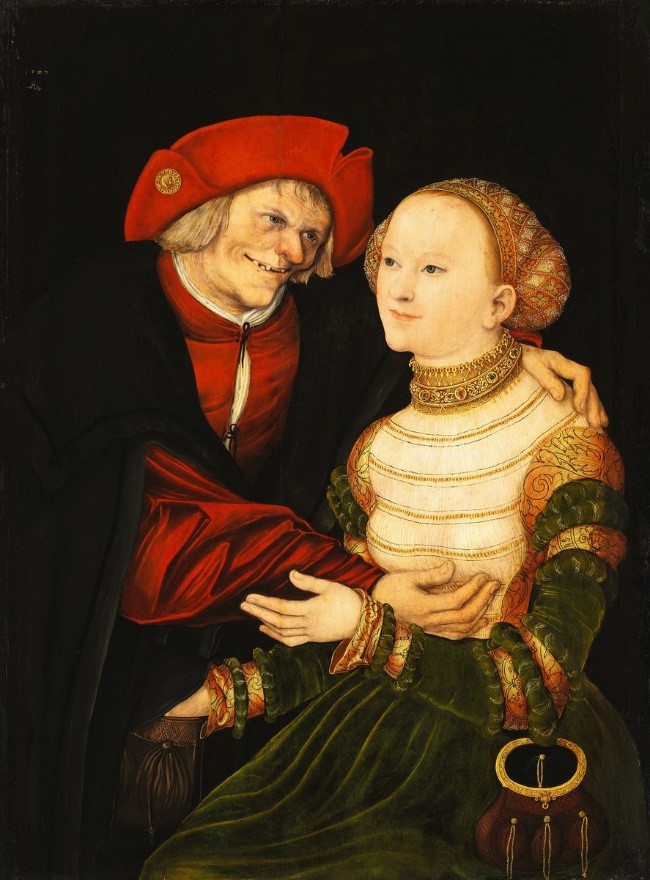
We would like to treat our visitors to a light-hearted Renaissance guide to relationships. What secrets lie behind each of these “amorous” pictures?
Stations
- An idyllic marriage?
- A relationship motivated by money
- Fleeting youth
- First love
- A passionate relationship
An idyllic marriage?
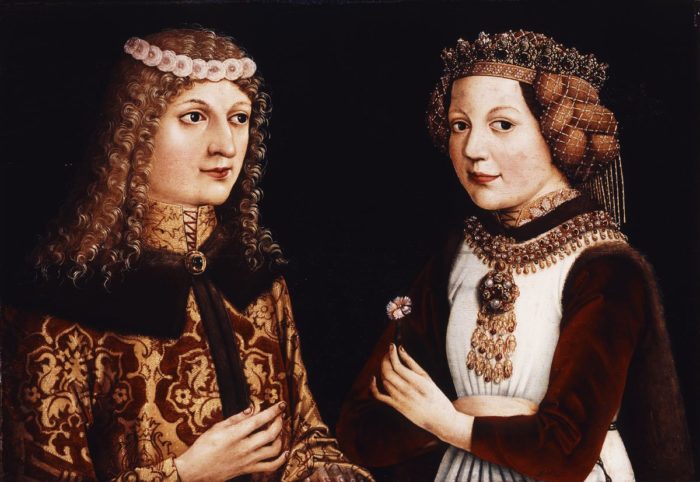
This portrait showing the engagement of Louis V and Magdalena Valois evokes the promise of a long and happy marriage. The bride-to-be holds a carnation in her hand, which in such cases symbolises love, youth, joy and the aristocratic way of life. However, there is a slight flaw in the story: the couple never met each other. Louis V sent his envoy to Magdalena to ask for her hand in marriage in 1457, yet he was unable to follow himself. According to the latest research, it may have been leukaemia that was the cause of his sudden death.
A relationship motivated by money

The tradition of ill-matched couples in written and pictorial depictions can be traced back to antiquity. The theme became especially popular in the fifteenth and sixteenth centuries: Cranach and his studio, for example, made over forty works depicting ill-matched couples. The painting here shows an elderly man with a repulsive appearance and a young, attractive woman, who is rummaging in her “lover’s” money pouch. This element aptly demonstrates the only rational explanation for their relationship, while serving as a warning to men of the danger of female cunning, which, if unheeded, will lead to their losing their senses, wisdom and wealth.
Fleeting youth
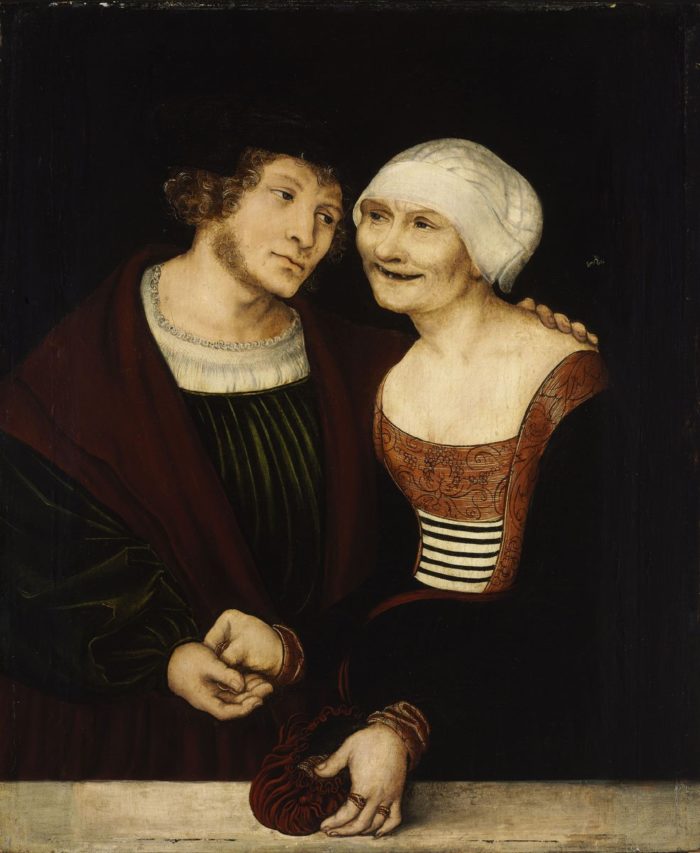
This picture unambiguously confirms that Cranach was not biased since it depicts the same situation as the previous painting but in reverse. The woman, who is far from being young and pretty, presses a dowry allowance into the hand of her handsome lover. The joint depiction of money and the passing of beauty draws attention to the fleeting nature of earthly joy. This theme can be linked to a proverb that was well-known in its time and goes like this: there is no fool like an old fool.
First love
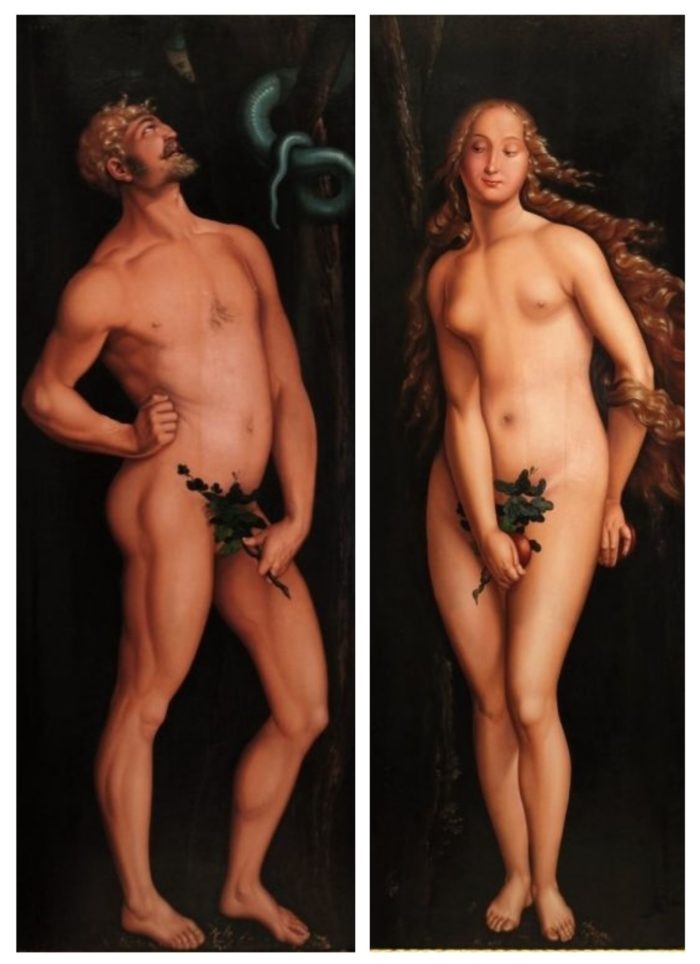
Adam and Eve were created for each other, yet every relationship has its ups and downs. Baldung Grien’s depiction of the greying couple does not follow Durer’s classic model with ideal bodily proportions but rather encapsulates the respective mentality of man and woman. Aware of her powers of seduction, Eve confidently glances at Adam, who is quarrelling with the serpent bearing a human face. Adam’s muscular body, fraught with tension, simultaneously expresses his standing up to the serpent and his submission to Eve’s power of attraction.
A passionate relationship
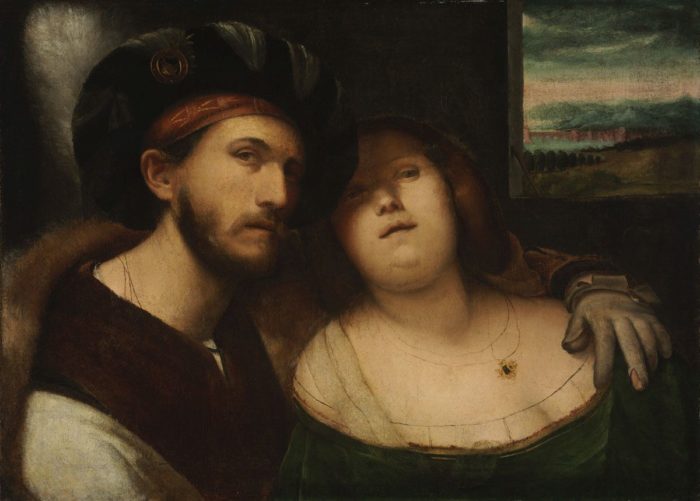
When looking at Altobello Melone’s composition of a pair of lovers, it is striking that this is not a decent Renaissance married couple who are smiling back at us. We cannot help but feel the erotic charge and unusual intimacy of the painting, and can justifiably assume that this scene is one of forbidden or at least clandestine love. The woman has flung back her head, her lips are open, her hair dishevelled and her necklace has slipped out of place. The man places his arm around his love both protectively and possessively, casting a glance at us to lend this emphasis. He rests the flat of his hand on her naked shoulder. His middle finger protrudes from the hole in a glove used for hunting and falconry, an intimation, perhaps, of his frivolous sexual intent.
